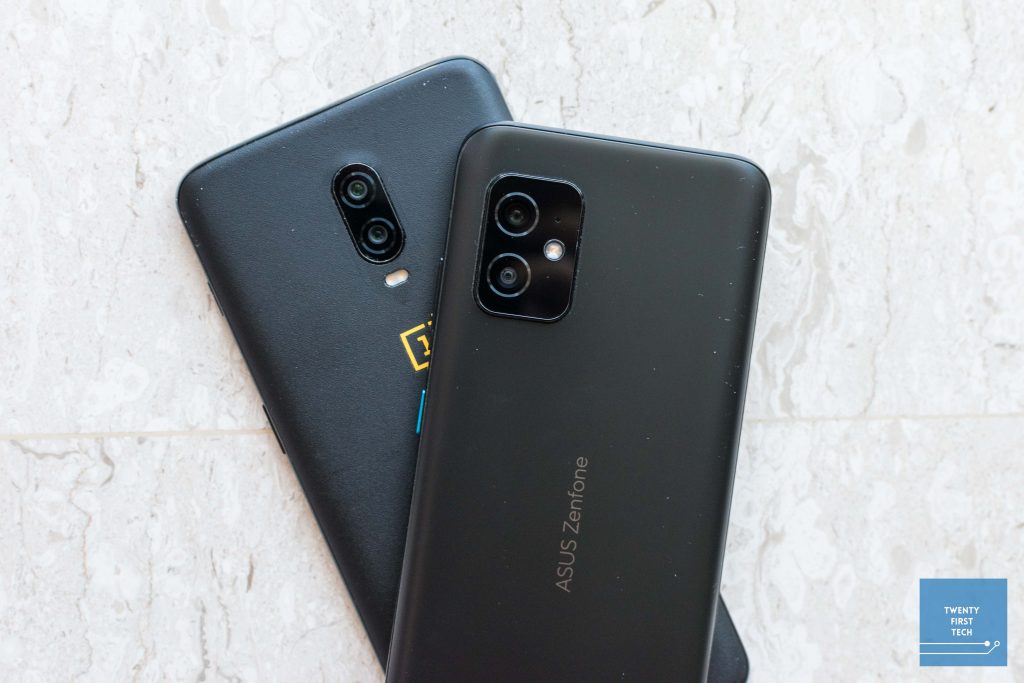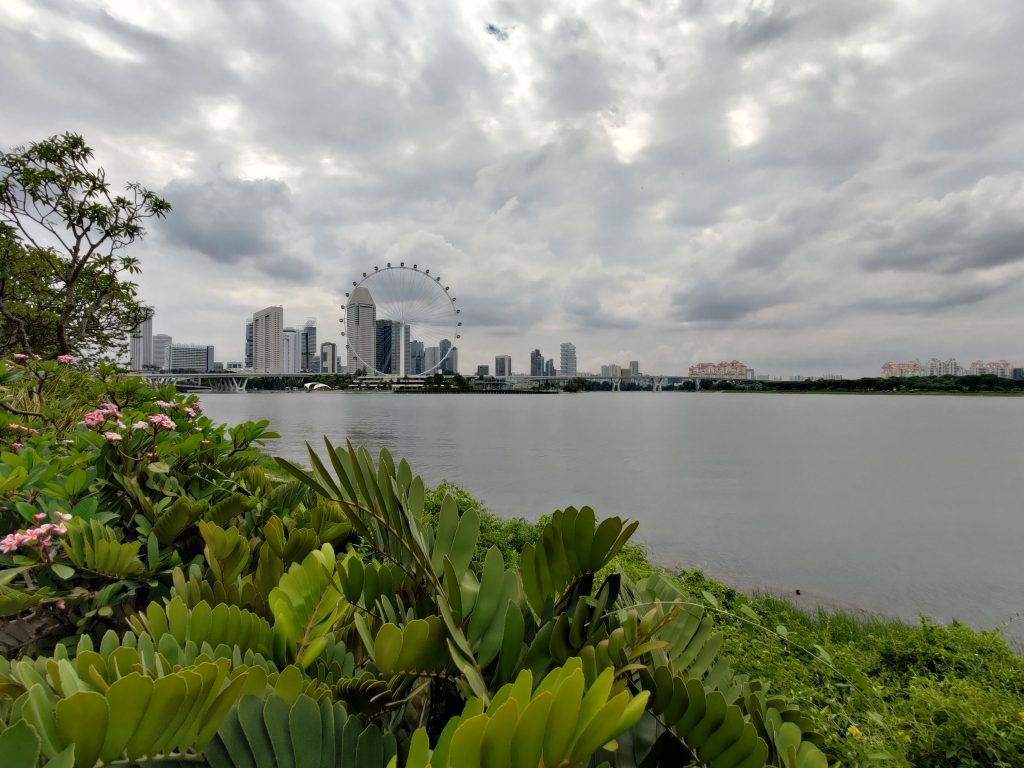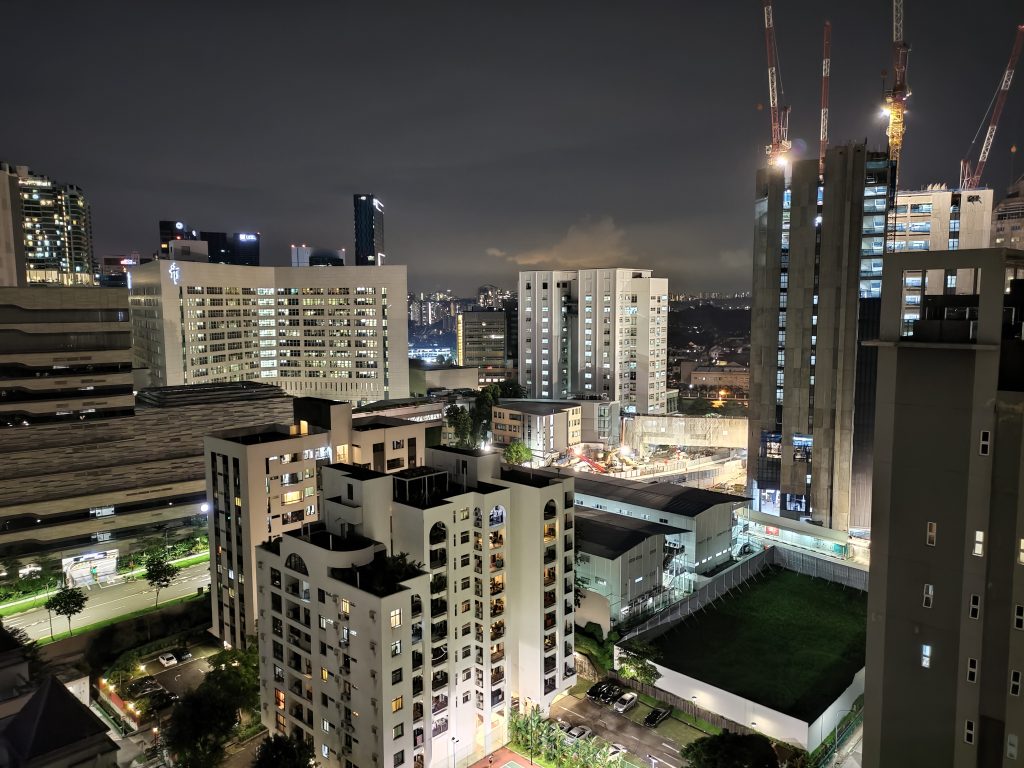The Zenfone 8 is the surprise contender in the recent resurgence of compact flagship smartphones. Our ASUS Zenfone 8 review.
In my ROG Phone 5 review, I remarked that the recently announced Zenfone 8 was a compelling alternative to the gaming beast. Starting at S$999, the Zenfone 8 retains key flagship features in a smaller package and at a lower price point. As someone who prefers compact phones, the introduction of the Zenfone 8 was certainly a welcome surprise for me. So, after a couple weeks with the Zenfone as my daily driver, how does it stack up?
ASUS Zenfone 8 Specifications
- 148 x 68.5 x 8.9 mm, 169g
- IP68 water/dust resistance
- 5.9″ 1080 x 2400 120Hz AMOLED display, HDR10+
- 8GB/256GB (S$999) / 16GB/256GB (S$1099)
- Snapdragon 888
- Cameras
- 64 MP, f/1.8, 26mm (wide), 1/1.73″, 0.8µm, PDAF, OIS
- 12 MP, f/2.2, 112˚, 14mm (ultrawide), 1/2.55″, 1.4µm, dual pixel PDAF
- 12 MP, f/2.5, 28mm (front-facing), 1/2.93″, 1.22µm, dual pixel PDAF
- 4000mAh battery, 30W fast charging
- Misc: stereo speakers, 3.5mm headphone jack, NFC, notification LED, no wireless charging
- Colours: Obsidian Black, Horizon Silver
Design & Build
The Zenfone 8 belongs to a rare breed of compact flagship smartphones, alongside the likes of Sony’s Xperia 5 II and Apple’s iPhone 12 / 12 mini. It is this trait which is perhaps its most compelling. As someone who adored the Pixel 4a, the compact size of the Zenfone 8 instantly drew me in. It’s easy to forget how ridiculously huge phones have gotten, but holding the Zenfone in your hand triggers an epiphany. So this is how holding a phone should feel. I’m not constantly shifting my grip to interact with the screen, or being subconsciously afraid that the phone will topple from my hand. It’s simply a comfortable experience.

To put things into perspective, the Zenfone 8 is about the same size as a Galaxy S10e, Pixel 4a, and iPhone 12; although the iPhone is 3mm wider and has flat sides, and thus feels much less comfortable to hold. That being said, the Zenfone isn’t as compact as the iPhone 12 mini or iPhone SE (2020), though the latter has a much smaller screen. Overall, I think the Zenfone strikes the right balance between screen size and comfort in hand.
At 169g, it is also refreshingly light despite its glass and metal construction. I can use the Zenfone for a much longer time before feeling fatigue compared to my daily driver OnePlus 6T.

The design of the rest of the phone is clean and minimalistic. On the front there’s only a hole-punch camera disrupting the otherwise seamless full-screen display. On the frosted glass back there’s a camera module housing the main and ultrawide cameras, and Zenfone logo. Round the top there’s a headphone jack, and on the bottom there’s the SIM card tray, USB-C port, speaker, and a notification LED! The bottom edge is a strange place to have a notification LED, but it gets the job done. It’s always nice to see notification LEDs making a comeback.
One gripe that I have with the design is the reflective ring that surrounds the front-facing camera, similar to the one found on the Samsung Galaxy S20 FE. It doesn’t really show in the photos that I have of the device, but it certainly is obvious in person, and can be distracting. I also felt like the positioning of the hole punch cutout should’ve been closer to the corner; it takes up a bit too much space in the status bar.
The design of the phone, while clean, might be considered by some to be boring. It really is a matter of personal taste, though admittedly I did feel like it could’ve used more personality. A Horizon Silver version of the phone exists, and I find that to be the more interesting option.
The phone feels solid in the hand. The buttons are reassuringly firm and clicky, unlike those found on the Xperia 5 II. I also like the matte finish of the glass back as it is much less prone to fingerprints compared to a glossy surface. That being said, the matte back also contributes to it being a very slippery phone. Thankfully, there’s a decent case included in the box to help with the grip and protection. Lastly, there is also IP68 water and dust resistance!
All in all, ASUS did a stellar job for the design and build of the Zenfone 8. Bravo!
Display & Speakers
ASUS put a 120Hz 1080p AMOLED panel into the Zenfone 8, and it is a fantastic screen. It gets plenty bright outdoors, is HDR10+ compatible, and has a high refresh rate as well as good colours and contrast.
Yes, it’s not QHD, but at 5.9″ it doesn’t need that resolution. In fact, I can’t recall off the top of my head a phone of similar screen size that has a resolution higher than 1080p. At 446ppi, the display looks plenty sharp to me.
The high refresh rate is also a highlight. 120Hz is crazy smooth, and it contributes a lot to the overall feeling of speed on the device. In the settings you can choose from Auto, 120Hz, 90Hz or 60Hz. I left it at Auto, and while I did notice it throttling down the refresh rate when scrolling in certain apps like WhatsApp, for the most part it was fine. ASUS still has some work to do in optimising the Auto refresh rate, but until then if it really bothers you you can simply force a high refresh rate in the settings.
I do have one issue with the display, and it’s how the display behaves at low screen brightness. Firstly, I wished the display had a lower minimum brightness, as it doesn’t get quite dim enough in a dark room. Secondly, the screen seems to artificially boost the luminance of colours on the display, presumably to make it easier to read. The end result however, looks off. More annoyingly, the phone seems indecisive on when it wants to trigger this high-luminance mode, switching it on and off frequently, which is extremely distracting.
I wasn’t able to find a way to turn this off in settings, and so I hope ASUS will fix it in a future update.
Moving on to the stereo speakers. While not stereo front-facing, this is certainly one of the best pairs of speakers I’ve heard on a phone to date. It certainly gets much louder and fuller than those found on the Xperia 5 II or Pixel 4a. Bass is also clearly present here; it was completely absent from the two aforementioned phones. That being said, they aren’t as good as the speakers found on ASUS’s own ROG Phone 5. But I wasn’t expecting them to be, given the size of the phone
Overall, good display save for a few software quirks, and excellent speakers.
Performance
Performance is stellar as expected from a device packing a Snapdragon 888 and 16GB RAM. It’s not a huge improvement from the Snapdragon 865 however. And as with the ROG Phone 5, the Wild Life Stress Test shows that while the peak graphical performance of the S888 is impressive, it is unsustainable and quickly throttles down due to thermal/power constraints.
Interestingly, at throttled speeds, the Zenfone 8 performs even worse graphically than Snapdragon 865 devices. This isn’t a major dealbreaker, but it’s something to take note of if you’re planning on using this phone for prolonged gaming sessions.
I did notice that the Zenfone 8 tends to get hot. This typically happens when charging or during navigation, but I also found it to be occasionally true when streaming video or using the camera. It’s not a huge deal, but it gets hotter than the average phone that I test, and so it’s worth noting.


Cameras
The main camera of the Zenfone 8 utilises a 64MP Sony IMX686 1/1.7″ sensor with 0.8µm pixels and a Quad-Bayer RGGB filter. This is the same sensor as the one found on the ROG Phone 5, which I was pleasantly surprised by. Thus, as expected, image quality of the main camera is good. You can check out my ROG Phone 5 review for more camera samples.
Images are excellent in daylight. The Auto HDR kicks in when required to pull out details from the highlights and shadows. It works fairly well, as you can see from the comparison shot below.


Under low-light conditions, the night mode kicks in automatically, and works very well to bring out details in the shadows and reduce noise. The shots below are a tad bit overexposed, blowing out the highlights in the brighter parts of the image. But for the most part, these images are pretty good.
The ultrawide camera employs a 12MP Sony IMX363 1/2.55″ sensor with 1.4µm pixels and a 14mm f/2.2 lens. As is usually the case with ultrawide cameras, the image quality isn’t as good as on the main shooter. This is most apparent in the night shots above, where its dynamic range is clearly lacking behind the main camera’s.
In normal lighting conditions however, there is hardly any difference in quality between the main shooter and the ultrawide. Even colour reproduction is consistent across the two cameras, something which not all smartphones are able to get right.
All in all, camera performance is good.
Software & battery life
Out of the box, the software experience is a mostly positive one. The UX on offer is clean and close to the Pixel Experience. There also are hardly any unnecessary apps or bloatware installed. The default launcher is light and runs smoothly.
There are some frustrations though. I found that the phone frequently registers touch inputs while in my pocket, even with pocket mode enabled. This was rather annoying as it wasn’t uncommon to feel the phone vibrating from fingerprint log-in attempts while in my pocket, or to take the phone out of my pocket only to find it on the emergency contact screen. I also noticed delayed or missing notifications from certain apps.
The question of software support is also worth considering. While I’ve received two software updates during the review period, the phone is still running April’s security patch despite it being June. Based on ASUS’ track record of updating phones — the ROG Phone 3 still yet to receive stable Android 11 at the time of writing, while the Zenfone 7 only received stable Android 11 in April — I do not have high confidence when it comes to the speed of receiving Android version upgrades. Remember, Android 11 was released in September of last year. Furthermore, ASUS has only promised two Android version upgrades for the Zenfone 8, meaning the device should be supported up to Android 13, i.e. next year’s version of Android, before it becomes obsolete. That’s simply not ideal.
In an era where Apple is updating the six-year-old iPhone 6s to iOS 15 (that’s SIX major OS upgrades), and even Android manufacturers like Samsung are promising 3 Android OS upgrades, ASUS needs to up its game if it wants to compete in the premium flagship space.
On to battery life. It’s decent but not fantastic. I was able to get 4-5 hours of screen on time on a single charge. But due to the higher than average standby battery drain, I frequently found myself having to plug in the charger before the end of the day.
The standby draw is a source for concern. Leaving the phone turned on overnight results in an a 5-10% battery drain, even with the always-on display disabled. The screenshots below confirm that the main culprits for battery drain are consistently things like Android System, Phone Idle, Mobile network standby, and Android OS. Hopefully a software update will address the issue.
The phone charges decently quick with the included 30W charger, replenishing most of its power in half an hour. I’ve noticed that the final charge from 90 to 100% takes quite a bit lot longer compared to most phones I’ve tested — around 20 minutes.
ASUS does include some software features to prolong the lifespan of the battery, such as the ability to toggle slow charging or cap the maximum battery percentage to 80% or 90%.
Miscellaneous
There a couple of other miscellaneous things that I’ve noticed with the device:
- Good haptics
- Fingerprint reader accuracy is hit-or-miss — I found it to be worse than my OnePlus 6T, which isn’t very good to begin with. This can be rather frustrating.
- Screen off gestures can launch apps but can’t do system-level functions such as turning on the flashlight, something which I use on my OnePlus 6T all the time.
- Always-on display can only be set to permanently on or off, instead of a tap-to-show. Tapping on screen only shows the fingerprint sensor icon; it would be good if notification icons and the clock are displayed as well.
- There is no option to display notification icons when locked but show full notification content when the phone detects your face. Instead if you choose to hide sensitive notifications from the lock screen, all notifications including icons are hidden until a recognised face is detected.
- Phone vibrates quite a bit when playing audio through the speakers. It is still bearable and nowhere near as bad as the Xperia 5 II.
- Phantom touches are fairly common. My YouTube videos often un-pause themselves. Sometimes taps register when I’m scrolling. On a similar note, pressing the lock button once often registers as a double press, launching the camera.
Pricing & conclusion
Pros
- Clean, compact design with solid build quality
- Good 120Hz HDR10+ AMOLED display
- Excellent stereo speakers
- Top-end performance
- Clean software
- Good camera performance
Cons
- Fingerprint reader accuracy is hit-or-miss
- Average battery life with higher than average standby battery drain
- Software quirks — washed out colours at low brightness, touch inputs registering while in pocket, unpredictable refresh rate behaviour on “Auto”, delayed or missing notifications for certain apps, etc.
- Questionable software support — just two Android OS upgrades promised by ASUS and a less-than-stellar track record for timely software updates
I am rather conflicted on the Zenfone 8. The review started off on a positive note but soured towards the end. First impressions are the Zenfone’s strong suit: excellent size and build with a great display and speakers. But use the phone for a couple of weeks and the cracks start to show: wonky software, a frustratingly inaccurate fingerprint reader, and middling battery life.
Software support is something that you may or may not care about, but for me personally, the fact that the Zenfone 8 is only guaranteed to be updated to next year’s version of Android rubs me the wrong way.
If you do decide to purchase the Zenfone 8, it can be had for S$999 for the 8GB/256GB version, or S$1099 for the 16GB/256GB. Both models are available in Obsidian Black, while only the cheaper model is available in Horizon Silver. You can get it from ASUS’s website, Lazada or Shopee.
As always, when purchasing on sites like Lazada, check if you can get additional cashback on your purchase with ShopBack. You can also check out our deals page for more Singapore deals.
Liked this review? Follow us on Facebook, Twitter or Instagram for more updates!




























Great review! The ASUS Zenfone 8 sounds like a perfect fit for those who love compact phones without sacrificing performance. I’m impressed by the camera features and battery life. Definitely considering making the switch!
Great review! I love how you highlighted the compact size and performance of the ASUS Zenfone 8. It’s refreshing to see a flagship that doesn’t compromise on features for portability. I’m definitely considering this as my next phone!
Great review! I’ve been looking for a compact phone that doesn’t compromise on performance, and the ASUS Zenfone 8 seems to fit the bill. Your insights on the camera and battery life are really helpful. Thanks for sharing!
Great review! The ASUS Zenfone 8 seems like a perfect blend of power and portability. I love the compact design, especially in a market flooded with large phones. The camera features look impressive too. Can’t wait to see how it performs in real-world usage!